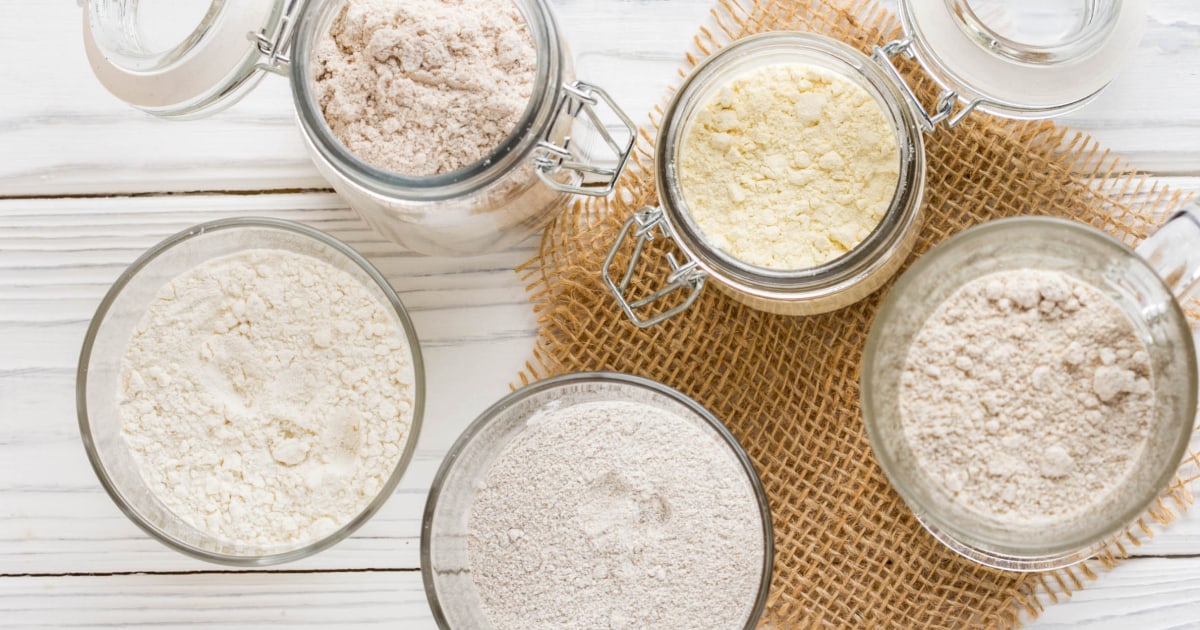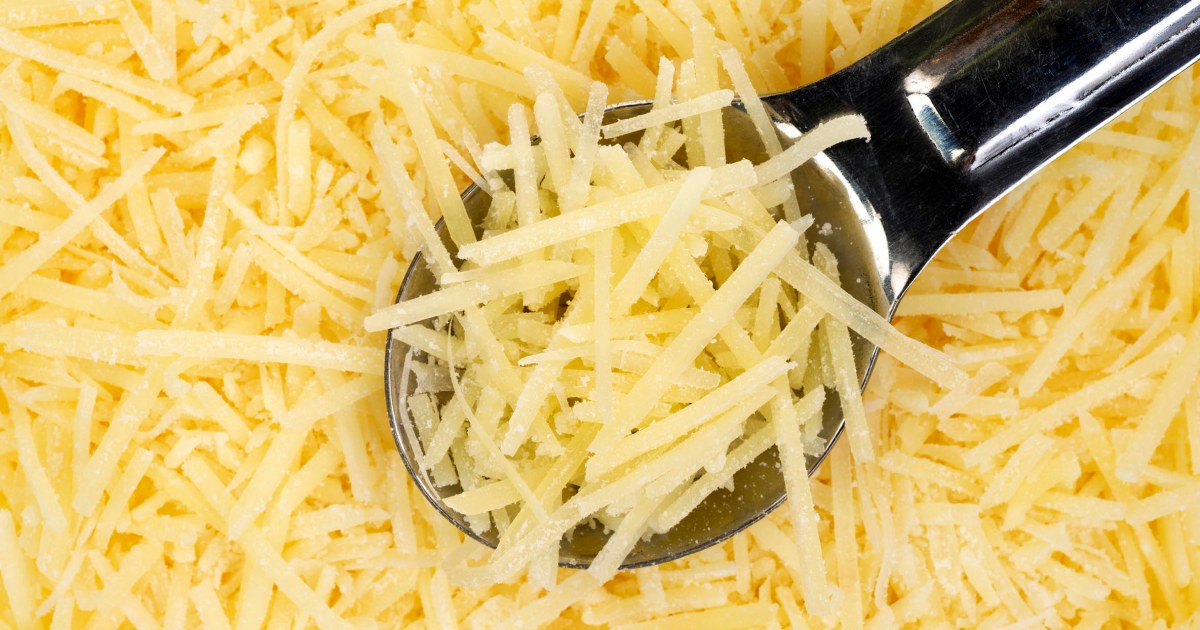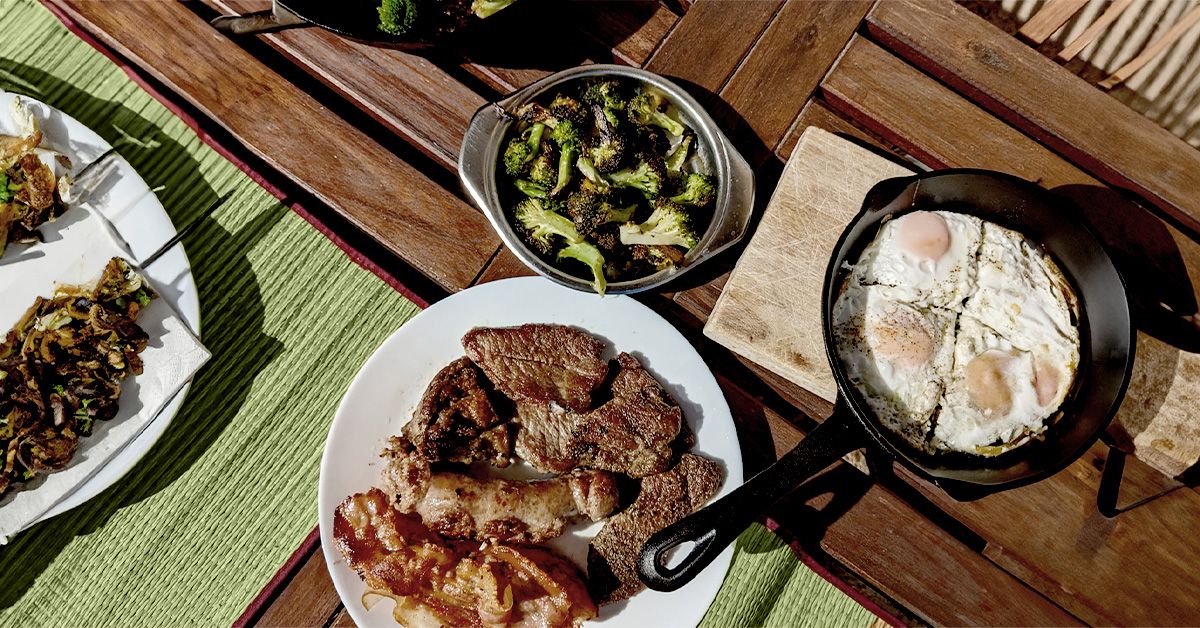All-purpose, enriched wheat and organic wheat are popular cooking and baking flours, but they’re all refined flour products. So, while tasty, these flours may be associated with certain health risks.
One study found an association between people eating higher levels of refined grains, like wheat flour, and a higher risk of premature coronary artery disease — similar to what might be seen with a diet high in added sugars and unhealthy oils.
You can still bake and cook with refined flours at times, but there are healthy flours out there, and they’re easy to find at major grocery stores or online. Here are some of the healthiest flours to add to your pantry.
The No. 1 healthiest flour
Oat flour is a whole-grain flour containing all three parts of the grain — the germ, endosperm and bran. Whole grains naturally contain vitamins and minerals, fiber and antioxidants.
A large 2024 study found that eating whole grains in mid-life was associated with healthier aging, with whole grain eaters living about a year longer without diease than those who ate the least whole grains.
As a dietitian, I consider oat flour the healthiest flour because it is not only easy to find or make (just blend oats into a flour consistency), but it’s also suitable for people with various dietary issues, including those avoiding gluten (as long as you choose gluten-free oats). It’s also versatile in recipes.
Oat flour has a similar nutritional profile as oats, with vitamins, minerals, and soluble fiber that promotes a healthy digestive system and supports heart health. This type of fiber draws water into your colon, softening your stools and making them easier to pass.
Soluble fiber also acts like a cleaning service, sweeping cholesterol out of your bloodstream and preventing it from being absorbed.
One type of soluble fiber in oats — beta glucan — has prebiotic activity that helps nourish a healthy gut microbiome. This compound reduces cholesterol and blood sugar in the blood, lowering the risk of heart disease and Type 2 diabetes. It also helps lower inflammation and strengthen the immune system.
A quarter cup serving of oat flour provides:
- Calories: 120
- Carbs: 22 grams
- Fiber: 3 grams
- Protein: 4 grams
- Fat: 2 grams
Oat flour is mild and nutty, making it a good choice for baked goods and an excellent substitution when you want the benefits of whole grains without whole wheat’s gritty texture or robust taste.
Oat flour can be substituted one for one with regular flour, but only when measured by weight (most people measure by volume). If measuring by volume, try using one and a quarter cup of oat flour to replace every cup of all-purpose flour. You may also need to add more liquid.
Other Healthy Flour Options
Whole wheat flour
If you don’t have celiac disease or a gluten intolerance, there’s no need to hate on whole-wheat flour. It should come as no surprise that it’s healthier than any refined white flours. In fact, whole grain flour has up to five times more antioxidant and mineral levels than white flour.
Whole wheat is a good source of fiber, a nutrient that up to 95% of people do not get enough of. A fiber-filled diet has numerous benefits. Fiber helps you feel fuller after meals and stabilize your blood sugar, may lower your risk of heart disease, and can improve digestive health.
A quarter-cup serving of whole-wheat flour provides:
- Calories: 110
- Carbs: 21 grams
- Fiber: 3 grams
- Protein: 4 grams
- Fat: 1 grams
Whole-wheat flour is one of the healthiest flours but is not the best choice for tender baked goods. If that’s your goal, you may want to mix it with another flour or choose a different one altogether.
Almond Flour
Almond flour is made by blanching and grinding almonds into flour. It’s not the same as almond meal, which is courser. Almond flour is naturally gluten-free, but since it’s made with almonds, it’s inappropriate for anyone who needs to avoid tree nuts.
Almond flour is very versatile. It can be used in baked goods, to coat fish and chicken, to make flatbreads and more.
Since almond flour has fewer carbs than regular flour, it’s a popular choice on low-carb and keto diets. It’s also healthier than regular white flour, with essential nutrients like vitamin E, magnesium and calcium.
A quater-cup serving of almond flour provides:
- Calories: 128
- Carbs: 6 grams
- Fiber: 3 grams
- Protein: 5 grams
- Fat: 12 grams
Although almond flour can be substituted for regular flour on a one-to-one basis, you may need to increase your binder (such as an egg or chia egg).
Coconut flour
This gluten-free flour is milled from desiccated coconuts, producing a fine-textured, mild and subtly sweet coconut flavor. Coconut flour is much higher in fiber and has more protein than other healthy flours. It’s also a good source of potassium and iron, nutrients that are often under-consumed in the American diet.
Coconut flour also stands out because it has a glycemic index of 35, compared to 85 in white flour. This means it won’t cause a dramatic blood sugar spike like white flour, making it a healthier option for people who need to manage their blood sugars.
A quarter-cup serving of coconut flour provides:
- Calories: 120
- Carbs: 18 grams
- Fiber: 12 grams
- Protein: 6 grams
- Fat: 3 grams
Since coconut flour is so high in fiber, it doesn’t perform like other healthy flours. It creates a denser dough and needs more liquid than other flours. It’s best to follow a recipe that uses coconut flour rather than substitute it for other flours, but if you want to make a swap, experts suggest a quarter to one-third cup of coconut flour for every cup of regular flour.
Buckwheat flour
Buckwheat isn’t technically a grain, but you don’t need to get caught up in the technicalities. When consumed as a flour, it acts as a gluten-free grain that’s packed with vitamins, minerals and antioxidants.
A particular antioxidant in buckwheat, rutin, has anti-cancer and anti-inflammatory properties. An older study published in the British Journal of Nutrition found that foods made with buckwheat flour were more satiating than those made with white flour, which may keep you from being hungry soon after eating.
A quarter-cup serving of buckwheat flour provides:
- Calories: 100
- Carbs: 22 grams
- Fiber: 3 grams
- Protein: 2 grams
- Fat: 1 gram
Since buckwheat flour can’t be swapped one-to-one with regular flour, it’s best to choose a recipe designed for it. Experts say you can swap 15-25% of the wheat flour in a recipe with buckwheat flour.
What flour is best for weight loss?
You can technically eat any healthy flour when trying to lose weight, but chickpea flour has some unique properties that make it a good choice when weight loss is your goal.
Chickpea flour
Chickpea flour is made by grinding dried chickpeas into a flour consistency. It also goes by the names garam flour and garbanzo bean flour.
Chickpea flour has fewer calories than other healthy flours, so if you’re watching your weight, choosing chickpea flour over another healthy flour may make it easier to stay within your goals. It’s also a good source of fiber and has 5 grams of protein per quarter cup, almost as much as a boiled egg. This fiber-protein duo helps you feel fuller and more satisfied at meal times, reducing the likelihood that you’ll be hungry and snacking again soon after your meal.
Additionally, studies have found that chickpeas may make it easier to lose weight. One study found that after eating a meal with chickpeas, participants experienced a reduction in appetite, and they ate less at the next meal, helpful conditions for weight loss.
In another study, chickpea flour was used to replace some of the refined grains in bread. When people ate the chickpea-boosted bread, they experienced an uptick in appetite-suppressing hormones and sensations of fullness compared to when eating ordinary white bread.
A quarter-cup serving of chickpea flour provides:
- Calories: 89
- Carbs: 13 grams
- Fiber: 3 grams
- Protein: 5 grams
- Fat: 1.5 grams
My favorite way to use chickpea flour is to make a flatbread, or socca, a simple dough made of chickpea flour, water, salt, and extra virgin olive oil. Add traditional pizza toppings or breakfast toppings. You can also use chickpea flour to make baked goods, coat chicken or fish, or thicken soups and stews.
What flour has the fewest calories?
Chickpea flour has the fewest calories, with just under 90 calories per quarter cup compared to 110 to 130 calories in other healthy flours. Its low calorie count is one reason chickpea flour is the best flour for weight loss.
What is the best flour for frying?
Cooks often prefer frying with rice flour because it has a finer grain than wheat flour, resulting in a delicate, crispy crust. It also absorbs less oil. However brown rice flour has the same properties and texture, but since it’s a whole grain, it’s a healthier option than ordinary rice flour.
A quarter-cup serving of rice flour provides:
- Calories: 130
- Carbs: 27 grams
- Fiber: 1 grams
- Protein: 3 grams
- Fat: 1 grams
Read the full article here
















